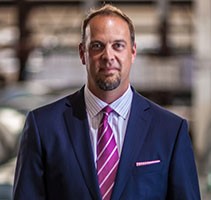
By Jason Albro, Nov. 2017

Building a warehouse can be vital to a company’s competitiveness and business survival
Building or expanding a manufacturing facility is a complex process that can take years but, for many businesses, it is necessary to long-term competitiveness and business survival.
There are different reasons for renovating, expanding, or building a warehouse that can include meeting growing business needs, penetrating new markets, overcoming bottlenecks, and replacing old equipment. Here are five best practices for how to go about upgrading a warehouse.
Assess the feasibility of renovating your facility by the getting the numbers you need.
Enlist structural engineers to come in to brainstorm solutions for the potential for shipping bottleneck. Figure out what your company can afford and what you can do to push the envelope. Framing the project around the internal rate of return (IRR), makes it possible to see a positive return even with conservative numbers.
Projects always take longer than expected. Plan accordingly. The expansion approval process can take up to four months due to questions about the project, and budget considerations. To get the building up and the machines running can take approximately eight months. All and all, from concept to finish line to do it right takes time, so factor that in before starting the project.
Deciding whether to renovate or build can be a difficult decision. Sometimes after careful consideration, you may realize that renovating your existing facility wouldn’t serve the best interests of your company in the long term. And then you may need to consider building a new facility from scratch.
As with any other real estate deal, the decision comes down to “location, location, location.” Here are a series of questions to consider before making the decision to renovate, expand, or build a new warehouse:
Ultimately, you want to choose the location that maximizes the answers to each of these questions. Whether the option is renovating, expanding, or building, draw up a separate IRR to arrive at the answers that best suit your company’s needs.
Maximizing space is a numbers game. The most important number is the cost of square footage and, for industrial locations, it is usually $85 per square foot. Consider how to maximize each of those square feet and minimize empty space. Any square foot that’s empty puts you and your customer at a disadvantage.
Maximizing space results in a flying-L or flying-T shaped building. Objectively review the layout of the facilities, otherwise the facility could be limited by too much dead space. You want to build in adaptability to expand without interference. When this is factored in, the flying-L or -T layout is usually the one that leads to the best use of space.
Involve every stakeholder, inside and outside the company, but especially city leaders. Approaching them early can mean you might be able to turn around permits much faster. Most cities are usually on board, as any investment in a facility brings new jobs. Invite the planning commission to see the whole process. Give them assurance that jobs will be built in.
Whether you renovate, expand, or build, an efficient, modern warehouse is a massive investment in your future that when done right is worth it. You may be able to grow your business at an accelerated rate, while also raising your customer satisfaction levels.
Jason Albro has been recently promoted to EVP West/Mexico for Kloeckner Metals Corporation where he oversees 18 facilities in the Western US and Mexico. His responsibilities include long-term strategic planning, net working capital management and development of the commercial and operations of those facilities. Jason held the position of VP of Sales for Macsteel Service Centers USA prior to Kloeckner’s acquisition in 2011. He started his career as insides sales with Baldwin Steel Company in 1993 in Tulsa, Oklahoma. He is a graduate of Oklahoma State University and holds a Bachelor of Science Degree in Marketing.

Article may be found: https://industrytoday.com/article/best-practices-upgrading-warehouse/

Steel base plates are fundamental elements employed in various manufacturing...
Metal fabrication is a critical process that transforms raw metal...
The solar industry has undergone a significant transformation by incorporating...

X
The Kloeckner Metals website uses modern technologies. Unfortunately, your browser doesn't support those technologies.
Download the latest version of one of these browsers to experience the site: